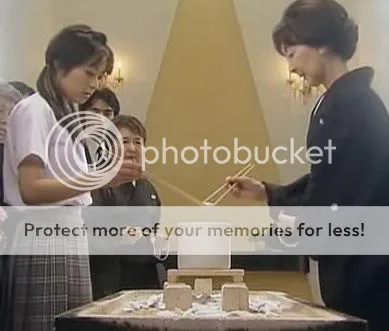I’m in Japan for the funeral of my beloved mother-in-law Minako Sugimura. I was interested to experience how this people process this universal experience. Here are some of my thoughts/observations.
1) Japan is considered not very religious. I think this is wrong. Actually, religious ritual is rather seamlessly woven into the culture. Here the practices are basically regarded as “customary’ versus religious. There isn’t a discrete Christian or Jewish or Muslim way. Rather, there’s the “way we do it”. And, they’ve a myriad of “ways” that in America would be called religion.
2) They do have a religion unique to Japan that’s called Shinto. But, it seems that Buddhism tends to dominate. That was the case in my family’s funeral.
3) There’s a great emphasis on chanting (sound) that I found transcending and calming. In many ways this felt much like a Jewish ceremony where a cantor might dominate. And, I think the intentions are similar.
4) Different to Judaism, there are flowers. Many, many,many flowers. In fact, as we are to see the deceased for the last time, we are creating a deluge of flowers by completely surrounding them (except the face). Its very beautiful.
5) Apparently, in the past, women attendees would dress in white. Now, its completely reversed. All black. I mean ALL black.
6) I loved the monk. He rode a motorcycle:
Japanese monk after officiating funeral about to alight his motorcycle. +
7) 99+ % are cremated. I’ve never been to a cremation. I don’t know if this was typical. My mother-in-law was wheeled up to the oven. The electric doors open. A machine conveys her in. A button on the wall is pressed. The door closes. Loud powerful gas jets come on and it begins.
8) One tradition was specific to Japan. It’s called kotsuage. I had a lot of trouble with this. Apparently, cremation does not reduce the person to ash. Bones are left. Normally a second step of pulverization is employed. Not in Japan. The table that carried the deceased is removed from the oven. The attendees stand around and acquire chop sticks. They proceed to start with the feet and bone by bone transfer them to containers. Feet first so the deceased is not stored upside down.
I am very open to all kinds of different cultural beliefs, practices, food, art, etc… I couldn’t/wouldn’t do this.
9) The deceased is given a new name. This is to prevent someone calling them back. But, this name must be purchased and it doesn’t come cheap. The whole matter’s very controversial due to its classist issues. Many choose to forgo, what’s felt to be somewhat of a corrupt practice by temples, this practice.
Koh bahn wah!
-Mark


My brother recommended I would possibly like this website. He used to be entirely right. This publish actually made my day. You can not imagine just how so much time I had spent for this information! Thank you!
Hey there, You’ve done a fantastic job. I will definitely digg it and personally recommend to my friends. I’m sure they’ll be benefited from this web site.
Hi, this weekend is good in support of me, because this time i am reading this wonderful educational piece of writing here at my home.
Good day very nice blog!! Man .. Beautiful .. Superb ..
I will bookmark your blog and take the feeds additionally?
I am glad to find so many useful info here in the publish, we want work out extra techniques in this regard, thank you for sharing.
. . . . .